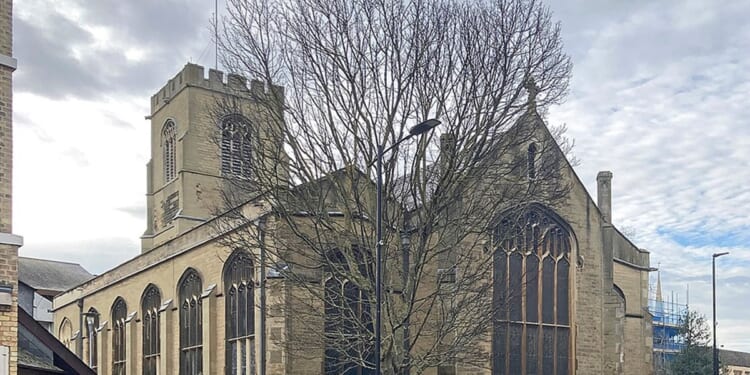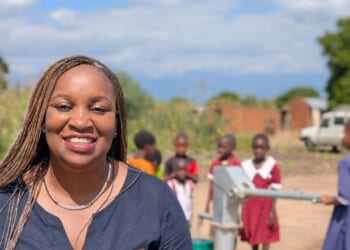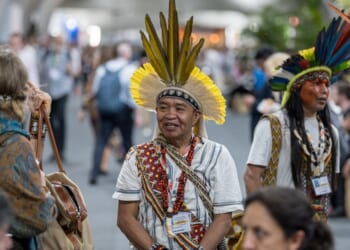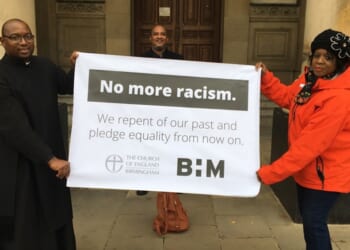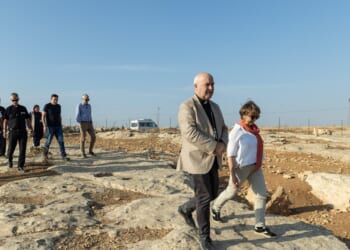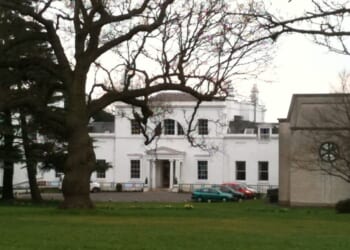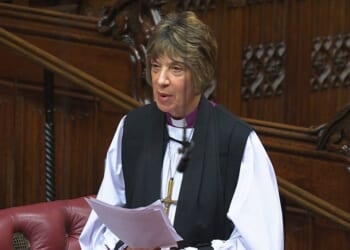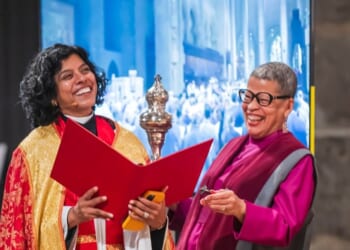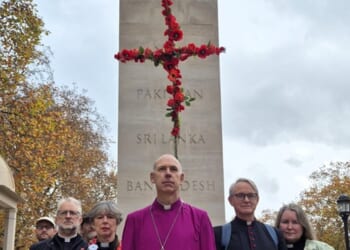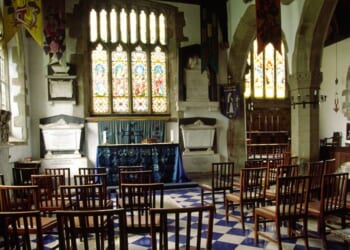A LETTER of legal claim has been sent to St Andrew the Great, Cambridge (formerly the Round Church), on behalf of seven Zimbabwean victims of John Smyth. It alleges that senior clergy and church officers “orchestrated a cover-up that enabled Smyth to continue abusing boys for decades”.
The letter, sent by Leigh Day Solicitors, argues that the failure to report Smyth’s abuse in the UK between 1982 and 1984 “directly led to his relocation to Zimbabwe, where he continued to prey on vulnerable boys”.
The claimants are six men who say that they were abused as teenagers at Christian holiday camps run by Smyth in Zimbabwe, and the mother of Guide Nyachuru, a 16-year-old boy whose body was found in a swimming pool at one of Smyth’s camps in 1992. The abuse included forced nudity, beatings with table tennis and jokari bats, indecent exposure, groping, and intrusive conversations about masturbation.
Smyth, described in a review by Keith Makin last year as “arguably, the most prolific serial abuser to be associated with the Church of England” (News, 8 November 2024), moved to Zimbabwe in August 1984 and began to run holiday camps in the country. The move followed the completion in 1982 of a report by the Revd Mark Ruston, then Vicar of the Round Church, commissioned after a British Smyth victim grew so fearful of beatings that he tried to take his own life.
The Ruston report described beatings of “horrific” severity: two boys had received 8000 strokes over three years.
Six clerics were among those who received a copy of this report. The Makin review concluded that these individuals had carried out an “active cover-up to prevent that report and its findings — including that crimes had been committed — coming to light”.
“By the time any attempts were made to warn those in Africa, John Smyth had already begun to abuse boys and young men. . . John Smyth was out of sight and out of mind, a problem solved and exported to Africa,” the review said.
Although attempts were made by these clergy to raise the alarm in Zimbabwe, these were “weak and wholly ineffective”. Smyth “was able to abuse boys and young men in Zimbabwe (and possibly South Africa) because of inaction of clergy within the Church of England”.
The Zimbabwean claimants are seeking a full apology and a full independent review of learning from the abuses perpetrated by Smyth in Zimbabwe and South Africa, as well as financial compensation.
The Makin review makes it clear that clergy in the UK who had worked with Smyth were aware of the risk that he presented, but that attempts to warn others in Zimbabwe failed, while Smyth refused to adhere to instructions to change his behaviour. The South African evangelist Michael Cassidy, leader of African Enterprises, for which Smyth initially worked in Zimbabwe, was warned by two clerics in 1984, but told them that the move was “too far advanced to be reversed”.
In 1986, Smyth set up Zambezi Ministries to run his own camps, with no monitoring or oversight from those with the knowledge of the risk that he posed. It was a move that alarmed the UK clergy and Mr Cassidy, who agreed to send Smyth a “note of caution”. In 1987, the Rector of St Aldate’s, Oxford, Canon David MacInnes, warned Martin Kingston, a barrister who chaired the Zambesi Trust, which had been established to raise funds to support the Smyth family.
In 1989, Smyth’s abuse was exposed in an autobiography by John Thorne, a former Winchester School headmaster, prompting the Zambezi trustees to resign en masse. The Revd Mark Ashton declined Smyth’s invitation then to take up the chair, saying that he “personally” believed that Smyth should not be working with young people, and that he should “come under the pastoral responsibility of a Christian leader who is fully aware of the past”. The new board should meet with him, or other clergy aware of this past, he suggested.
Smyth’s work was “vulnerable to errors of judgement or other attacks by the devil”. He added: “You have never been an easy person to advise against your will!”
Instead, Jamie Colman (now Sir Jamie), a young lawyer who had attended Smyth’s camps in the UK, took up the chair of Zambesi Trust UK. In response to Mr Ashton’s concerns, Mr Colman suggested that the situation was “different” because Smyth was in a “pastoral arrangement” with clergy in oversight, and “once fallen in a particular fashion, are you thereafter disqualified until the very end of the game?”
Mr Ashton also wrote to Smyth, urging him to stop working with young people.
In May 1993, several parents of boys who had attended Smyth’s camps in Zimbabwe complained to Baptist and Presbyterian ministers in Bulawayo “regarding severe beatings received by the boys on camps, compulsory skinny dipping, nude trampolining and allegations of Mr Smyth walking around in the nude at bedtime and at shower time in front of the boys”.
The ministers — aware of allegations raised by other church leaders — felt that complaints made to the Zambezi Ministries board and to Smyth had been ignored, and so approached David Coltart, a prominent human-rights lawyer.
When Jamie Colman met with the pastors in July 1993, he argued that that there was “nothing improper” about Smyth’s conduct, that the Zimbabweans had a different attitude to beating, and that, in line with Matthew 18, lawyers should not be involved.
Richard Johnson, chair of the Zambezi Trust in Zimbabwe, contended that Smyth was “a strong, forceful Christian with deep commitment to converting and disciplining young men” and that “his failure in Britain should not be allowed to negate the many successful years of youth work before and since the Winchester incidents.”
Smyth’s lawyer warned the pastors that they migh face an action for defamation. The board accused them of a personal vendetta.
After the death of Guide Nyachuru in December 1992, Smyth was charged with culpable homicide in September 1995 and, later, in April 1997, with five counts of criminal injury, when five boys were harmed. The prosecution was discontinued when it was successfully argued by Smyth’s legal team (largely led by Smyth himself) that the prosecutor had a conflict of interest.
The camps continued. Smyth justified the nudity and beatings in letters to parents, presenting himself as a “father figure”, suggesting that the nudity was “part of the all-boys-together fun of the camp”, and that beatings were necessary to “deter high-spirited naughtiness”. The Coltart report recorded that at least two boys had table-tennis bats broken on their backsides. One boy was found with a 12-inch bruise.
One of the claimants, Rocky Leanders, said last week: “The memory of the shame and humiliation I suffered to satisfy John Smyth has never left me. After the Makin report was published I expected some redress. But none came. I feel increasingly angry that the Church of England exported this criminal to Zimbabwe.”
A Church House spokesperson told Channel 4 News last week: “We have been in contact with the Church in Zimbabwe and offered to support and contribute financially to any review that it might choose to undertake, building on the review undertaken by David Coltart in 1993.”
In a statement, a spokesperson for St Andrew the Great, Cambridge, said: “We are full of sorrow about the horrendous abuse carried out by John Smyth which has had lifelong effects on survivors, both here and in Africa, and that he was not stopped sooner.
“While we are unable to comment on the specifics of this claim, we take the safety and wellbeing of our congregation, staff and volunteers extremely seriously and follow Church of England’s Safeguarding Policy and Practice Guidance designed to protect vulnerable people.”

